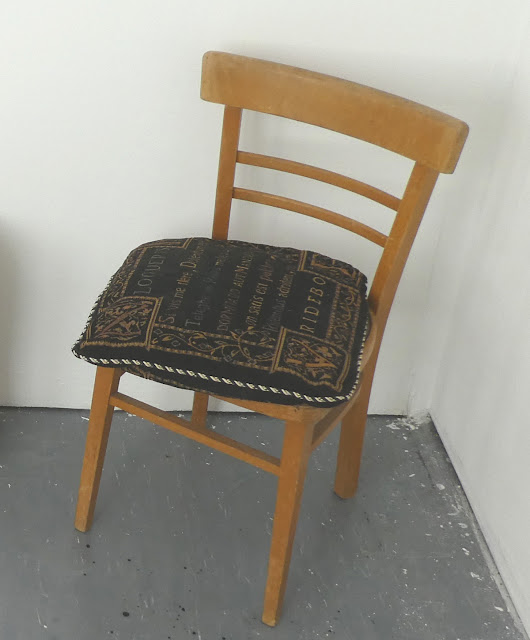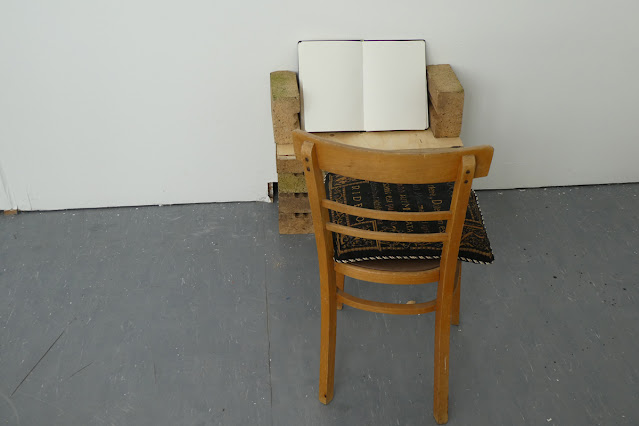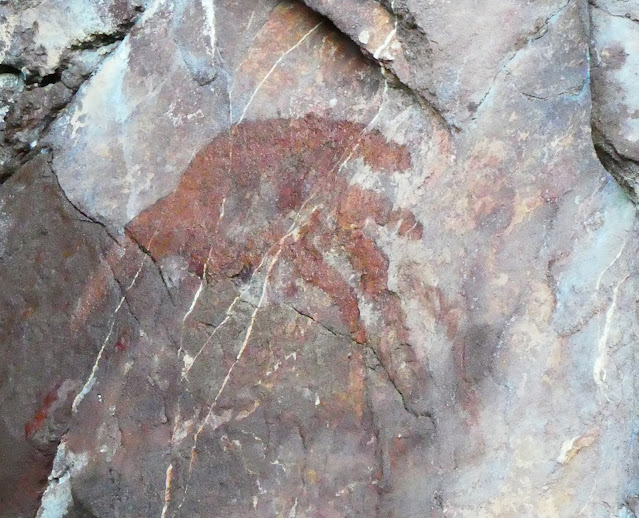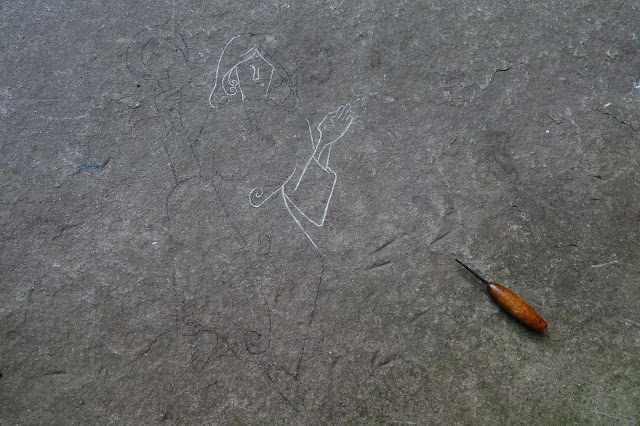Furnishing the Display Space
With the editing/spellchecking of the text now almost complete and due to be sent to the printers at the end of the weekend (after the final round of edits and fine-tuning), biggest concerns have recently been turning to the display space.
I've added a chair and cushion to invite a viewer experience of the book - the narrative text. The cushion, with its poetic Latin inscription, is revealed to be a sarcastic mirror of the poetic content of the book. The nature of the Latin text is actually pretty significant, as this blog post and translation shows. The idea that it is itself a 'deconstructed' (cut up/rearranged/repackaged) text about poetry and writing poetry is another layer of playfulness and rebuilding in this museum space, which is more like a space that looks a bit like a museum space - like the Latin text which looks like a Latin text but isn't really (it's corrupt, edited and faulty). In another sense, the Latin may be as obscure as some of the names and compound words found in the text, which themselves may need translation, as do the Runic inscriptions on several of the engraved stones. (Multiple languages are therefore represented: bastardized Latin, modern English, invented 'Gyldland Runic'; and in the narrative text itself, the vestiges of Old English and also hypothetical Proto-Indo-European).
Echoing the minimalist/deconstructive tactic of taking the display case apart and mounting the glass lid on bricks, I've discarded the idea of a lectern ( a formal/authoritative reinforcement of the formal/authoritative nature of the book itself) and instead plonked it on an almost Carl Andre-esque arrangement of bricks and wood - raw materials, in a rough and unhewn state, which actually contrast nicely with the refined text itself, as well as the more domestic form of the cushion, and the rather bland, neutral object of the chair (nicer than those plastic primary school type things you usually have to sit on in public galleries, but not too comfortable to induce a nap). Viewers will be invited to interact with the text with a simple "please read!" sign (which is of course an invitation to skim - as the current text is 270 pages long).
A further idea came in with the rediscovery of the above display stand, derived from a local garden centre and previously buried in my shed. Designed to hold books, pamphlets, newsagent items and the like, it's the kind of thing commonly seen in visitor centres and the 'shop' areas of galleries and museums. Instead of holding books to buy (there'll only be a very few limited copies of the hardback text for sale), I thought instead it might hold the printed texts which have until now been floating about at floor level. These could be printed on thin card/thick paper and presented like things to buy, but which are themselves unique, being the only hard copies of these little explanatory texts, that would otherwise be seen on walls, or elsewhere to 'explain' things to visitors. (Alternatively, I could put them all together into a small pamphlet, which could include the photos and details of the cave painting, which are also currently without a home).
I had dragged up a plinth to act as stand-in for the book lectern and was about to return it, when I realised it made a rather nice barrier to the 'cul de sac' of the display (forcing visitors to move anti-clockwise). It also fills the function of a thing normally used for a purpose other than what it's being set to - rather like the glass case top, which is supposed to protect and shield, but is itself protected and shielded, in the opposite corner (or will be when the warning tape and sign are in place). The plinth does not hold a sacred art object, but acts as a silent policeman, directing visitors the "correct" way into the exhibition. The explanatory text which discusses the 'Saga' as a text and narrative work may be pinned onto the plinth's opposite face, so it's one of the last things the visitor confronts (usually, such a text would be at the start of the show - but this spiral path is one of discovery, like any labyrinth, and life's - and nature's - lessons are not linear). No minotaur lurks here, but there is a horned, primal lunar deity engraved on the slab on the floor...and the relationship between lunar, matriarchal mythical themes, and labyrinths, is clear in the tales of Ariadne, Arachne, and spider-lore in general (which is explicitly described in the narrative poem).
The gap in the board beneath the display set-up could hold the audio device and speakers for the sound recording component. Wood and bricks are the foundations of the physical forms of societies and civilizations - and epics, narratives and myths embody knowledge, attitudes and politics which exist and are enacted within those spaces. In this presentation, the unhewn material components house the refined outcomes of learning, skill and craft.
The glass protective shield which shields nothing - and the commercial magazine/catalogue stand which has nothing for sale.










Comments
Post a Comment